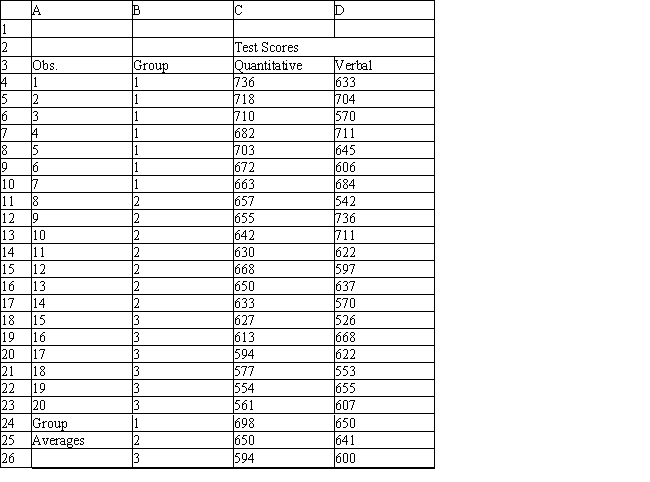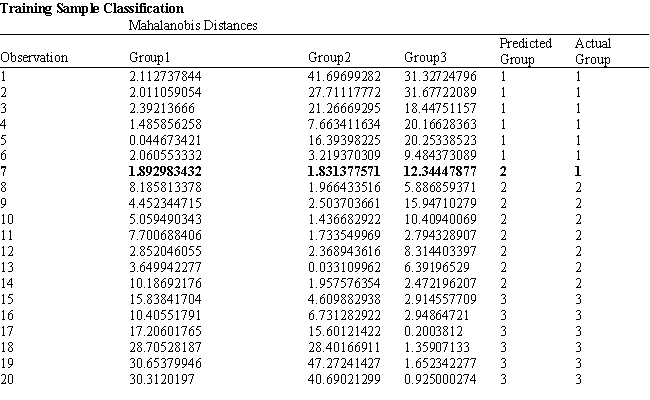Exhibit 10.2
The following questions are based on the problem description and the output below.
A college admissions officer wants to evaluate graduate school applicants based on their GMAT scores, verbal and quantitative. Students are classified as either successful (Group 1) , marginally successful (Group 2) or not-successful (Group 3) in their graduate studies. The officer has data on 20 current students, 7 successful (Group 1) , 6 marginally successful (Group 2) and 7 not successful (Group 3) . 




-Refer to Exhibit 10.2. What is the verbal test score value of the group centroid for group 3?
Definitions:
United States
A federal republic in North America comprising 50 states, a federal district, and several territories, recognized for its significant influence on global politics, economy, and culture.
Vietnam Policy
Refers to the strategies and decisions made by the United States government regarding its military and political involvement in Vietnam, particularly during the Vietnam War.
Nationalist Movements
Collective actions and ideologies aimed at achieving self-determination, independence, or national sovereignty for a particular group or territory.
Q2: The category of decision rules that contains
Q11: Supply quantities for supply nodes in a
Q18: A persistent upward or downward movement of
Q26: A company wants to purchase large and
Q34: Inventory position is defined as<br>A)ending inventory +
Q34: Techniques)used in classification step of data mining
Q36: Mixed IP formulation requires that:<br>A)all decision variables
Q38: Refer to Exhibit 11.9.Which column in the
Q77: Refer to Exhibit 10.1.What is the quantitative
Q102: If using the regression tool for two-group